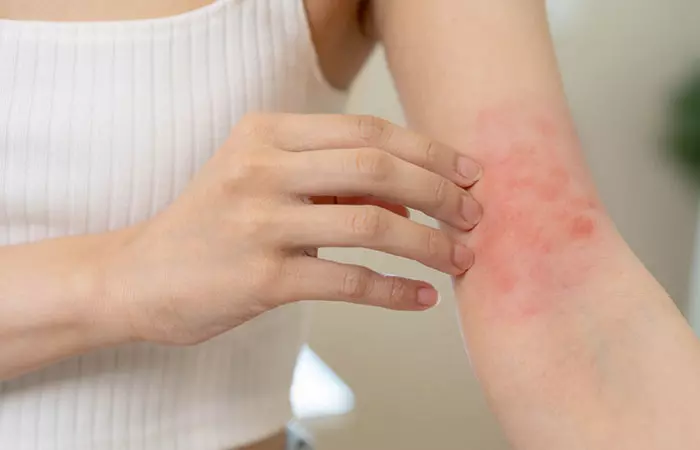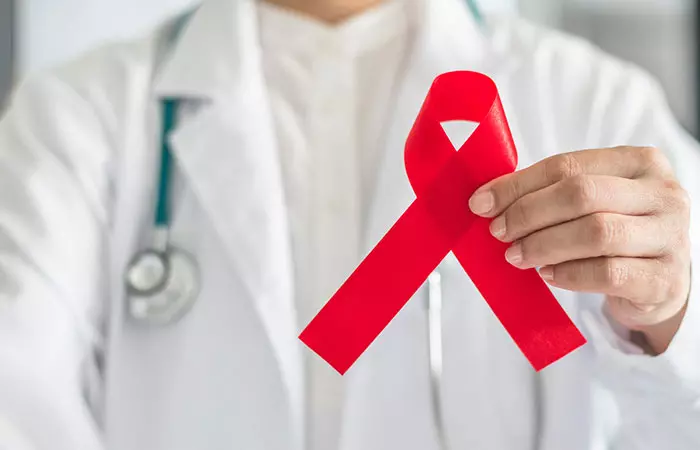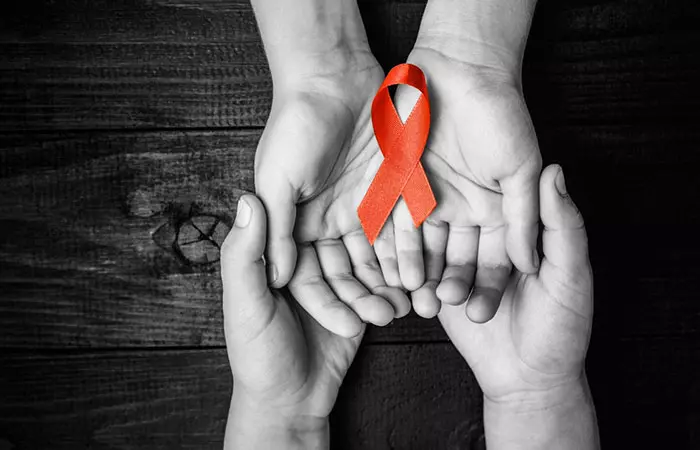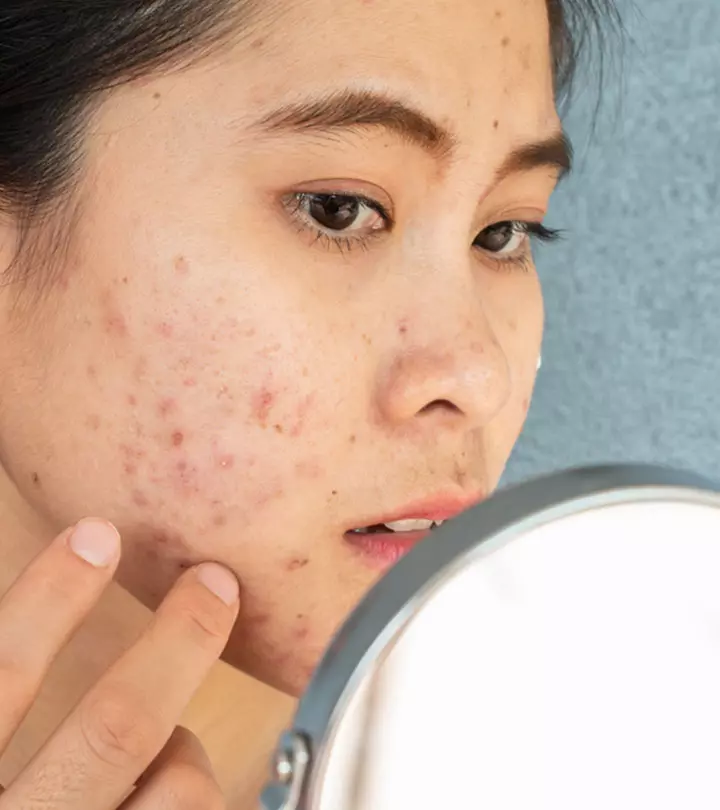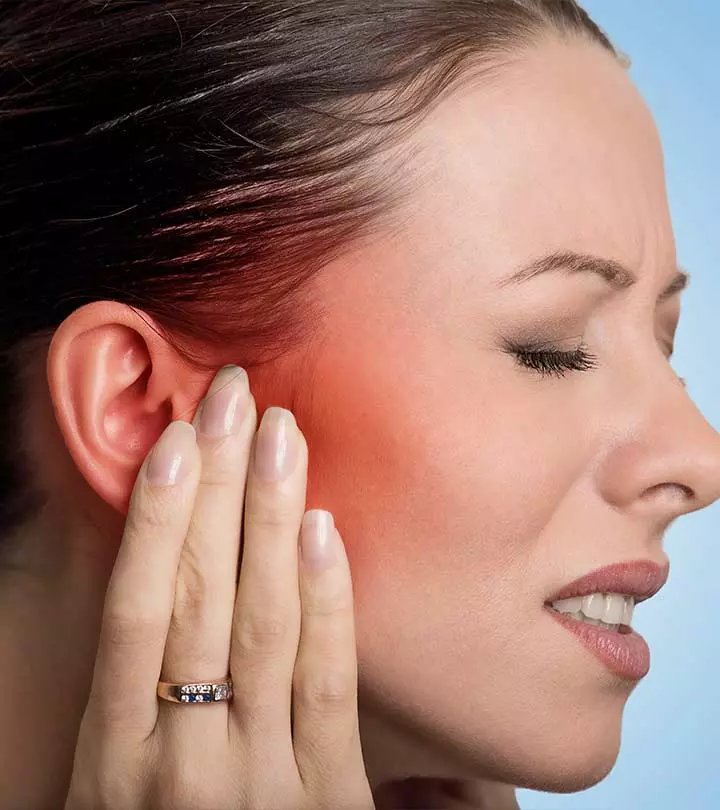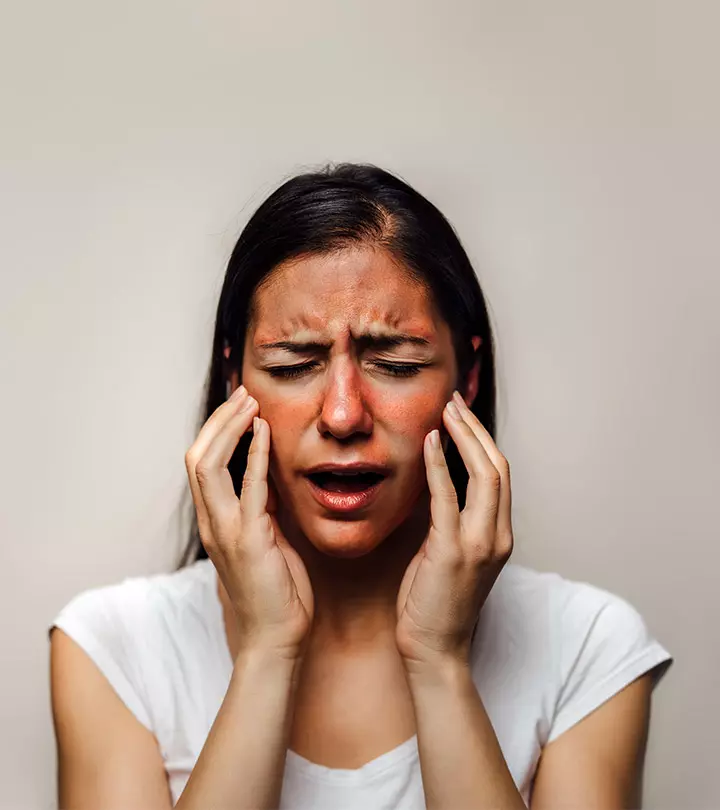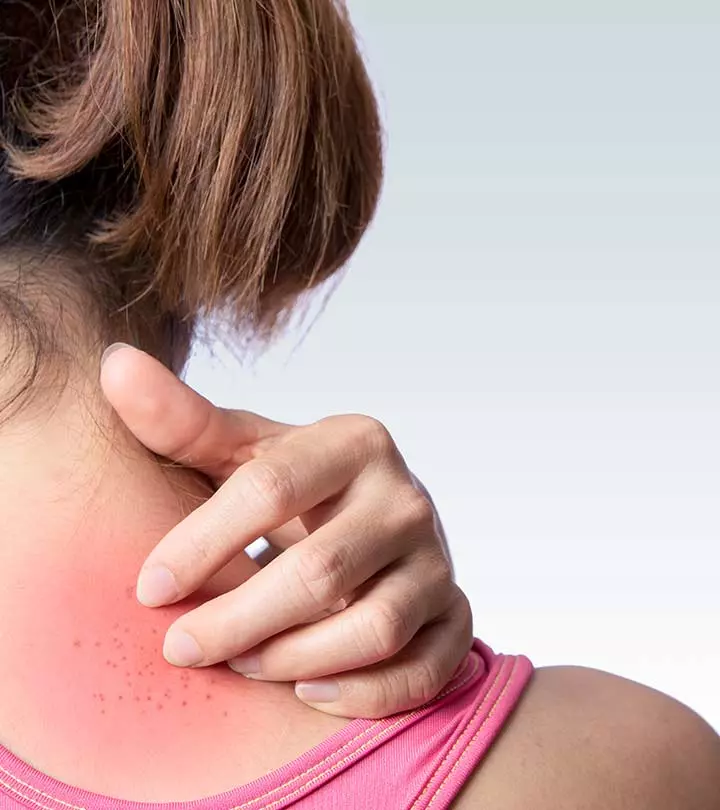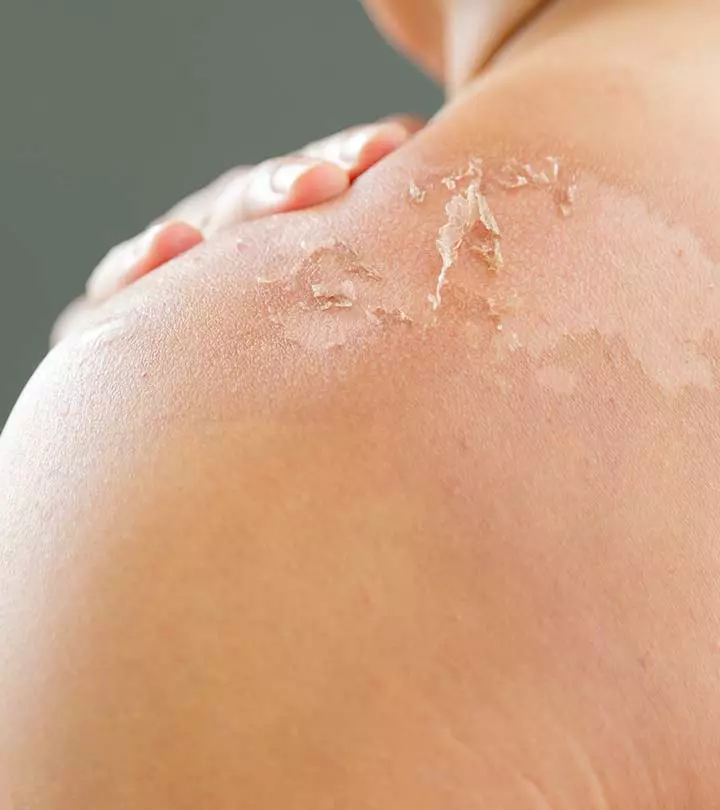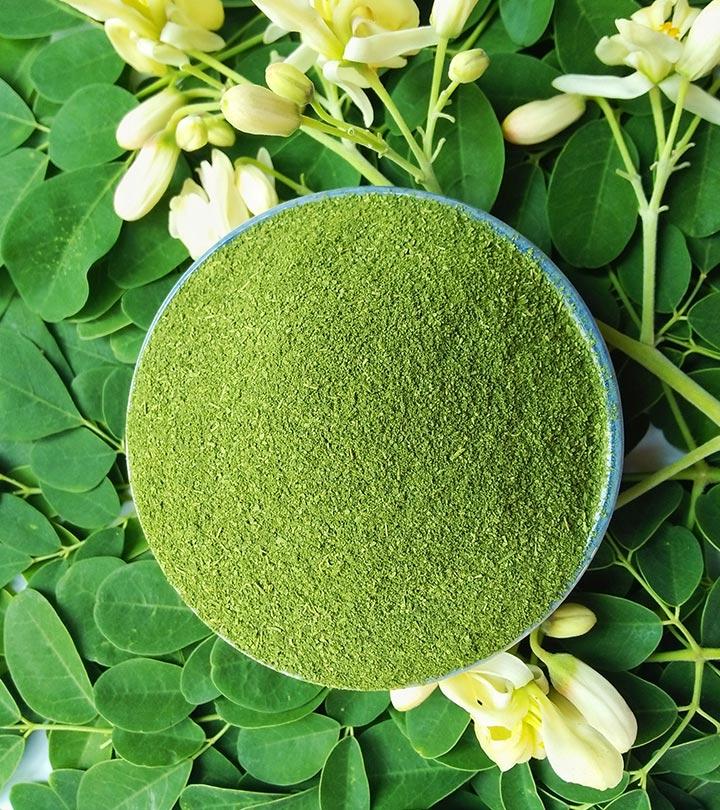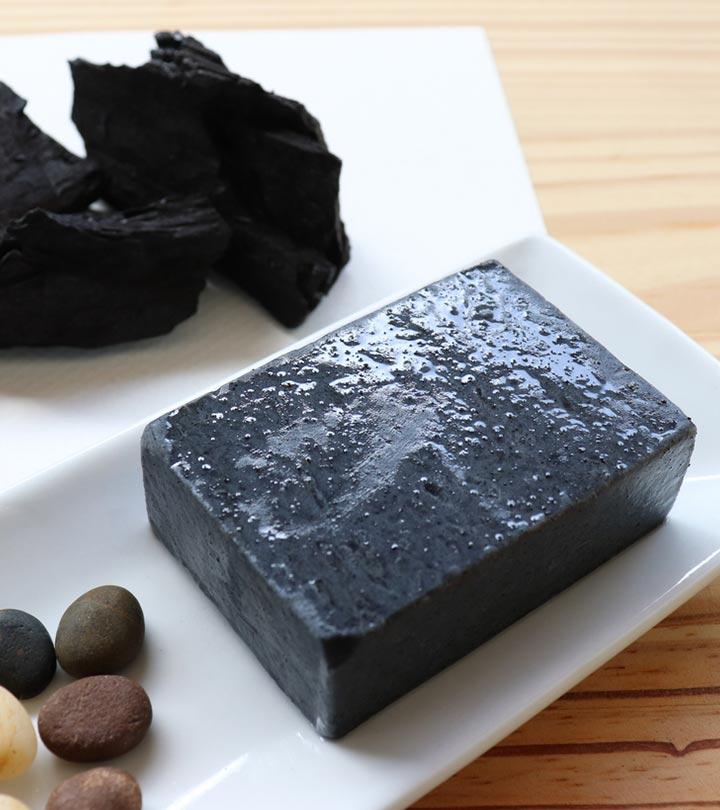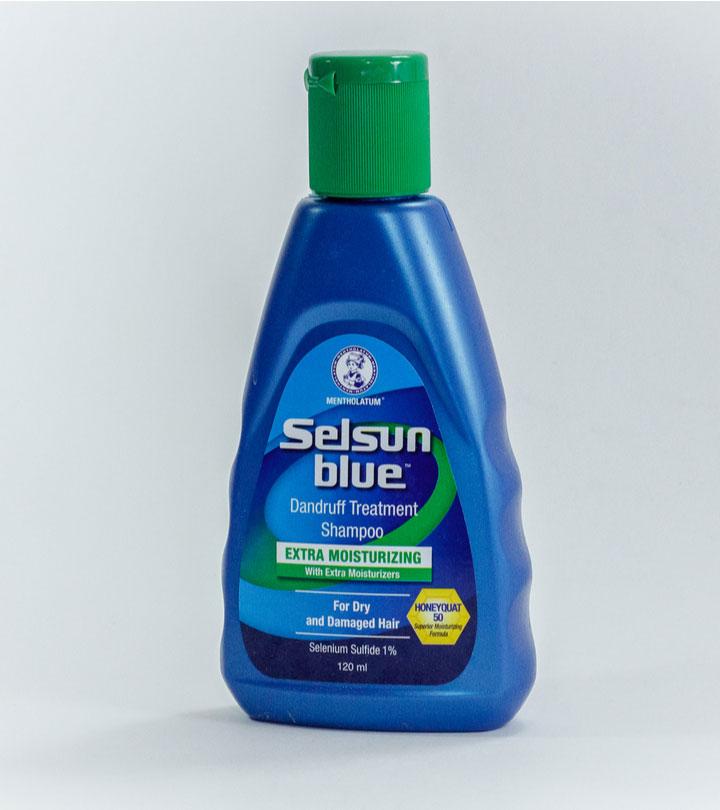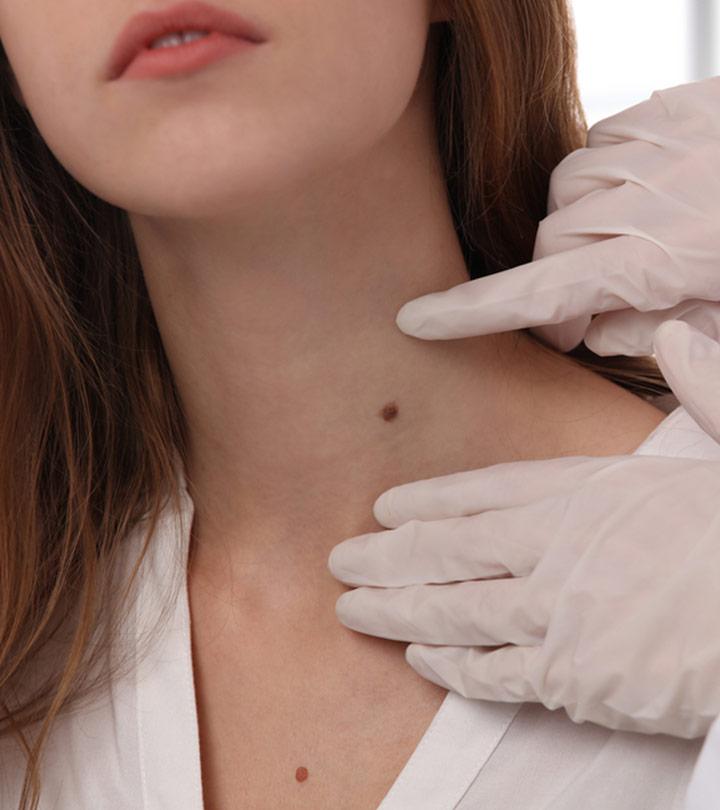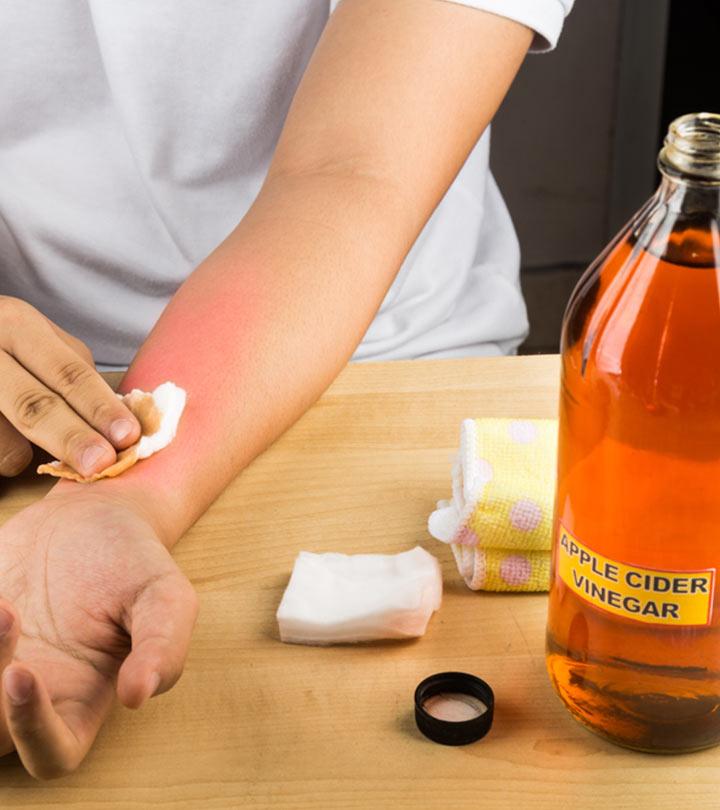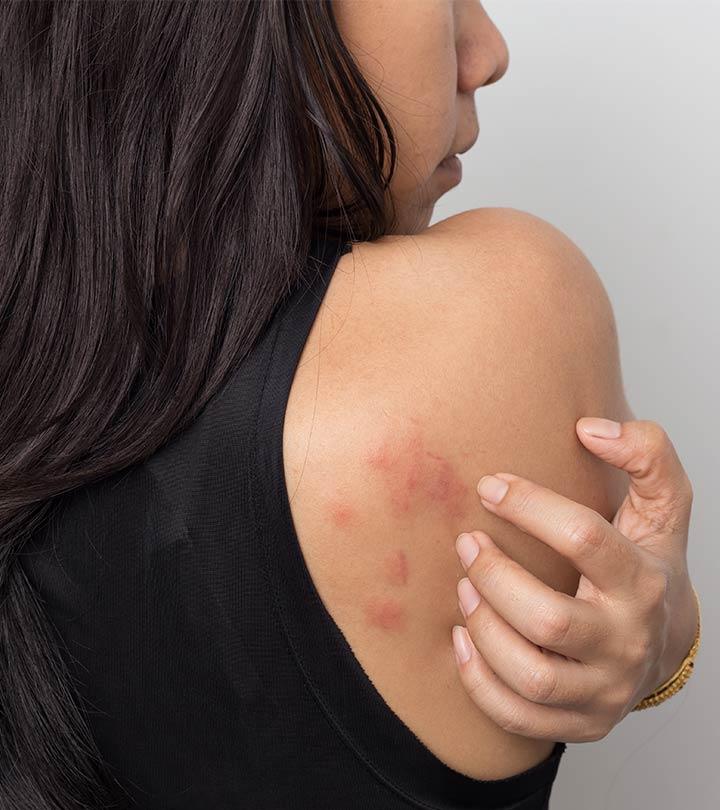HIV Skin Rashes: Symptoms, Causes, And Treatment Options
Watch out for the signs to identify HIV rashes and learn ways to control them.
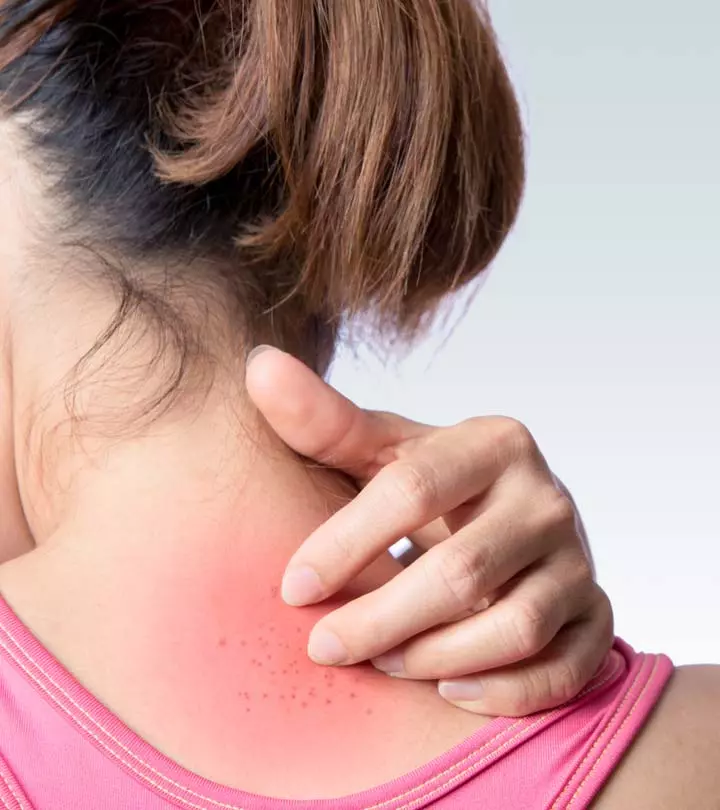
Image: Shutterstock
Skin changes are common in people who are HIV-positive, and rashes are one of the opportunistic infections that can occur due to a weakened immune system. A rash can be an early symptom of HIV. It is also a common reaction to HIV medications. Though it may sometimes go away within some days, it can sometimes recur and even prove fatal. Early testing and timely treatment along with monitoring the viral load, are effective ways to stop the progress of an HIV rash and prevent transmission.
In this article, we discuss the causes of HIV rash and the treatment options available, along with strategies for preventing the condition and addressing stigma. You will also find out why these rashes can be life-threatening. Keep reading to know more
In This Article
What Is HIV Rash?
HIV infection involves changes in the immune system that trigger various skin reactions, leading to skin rashes. Dr. Kire Stojkovski, a practicing medical doctor, says, “HIV rash is a type of skin infection which appears a few weeks after a person is infected with HIV.” HIV rash is of different types and can develop on any part of the body, including the face, abdomen, arms, or legs.
HIV rash can initially manifest in different forms. Understanding how to identify them can help you choose the right course of treatment. Learn more in the next section.
Types Of HIV Rash
The types of HIV rash include (1):
- Maculopapular Rash: Is a flat and discolored area of the skin with a small raised bump (2).
- Eosinophilic Folliculitis: Occurs as small red or pus-filled bumps, often on the shoulders, trunk, arms, neck, and forehead.
- Papular Pruritic Rash: Is characterized by itching papules on the arms, legs, face, and trunk.
- Xerotic Eczema: Is marked by severe dryness and itchiness.
- Prurigo Nodularis: Causes itchy, raised lesions on both sides of the arms and legs, and is typically found on the outer parts of the limbs.
- Seborrheic Dermatitis: Occurs during the early stages of the disease in areas where there is an abundance of sebaceous glands, including the sides of the nose and the chest.
Often these rashes could be mistaken for a symptom of another infection. So, it is better to know about HIV rash to identify it. Read on to learn more about it.
What Does HIV Rash Look Like?
HIV rash can be reddish, blemished, itchy, or painful. In the early stages of infection, the rash looks flushed, discolored, and reddish with flat blemishes and does not itch. It usually appears as a flat red area covered with small bumps.
 Quick Tip
Quick TipHIV rash can be an early symptom of the infection and may be accompanied by other symptoms. Keep reading to find out more.
Symptoms Of HIV Rash
If you have a rash and suspect an HIV infection, look out for the following symptoms (1):
- Night sweats
- Fever
- Chills
- Muscle aches
- Fatigue
- Sore throat
- Swollen lymph nodes
- Mouth ulcers
These symptoms may last for a few days or several weeks (3).
However, these symptoms can also be of other infections or side effects of certain medications. So, it is important to consult a doctor for a proper diagnosis.
Read on to learn more about the types and causes of HIV rash.
Causes Of HIV Skin Rash
The main causes for HIV skin rash are:
- Acute HIV Infection: A rash is one of the symptoms during the early stages of infection. It usually goes away as the immune system produces antibodies. However, if the person is not taking proper medications, it may recur due to a weakened immune system (4).
- HIV Medicines: Dr. Stojkovski says, “The HIV rash may be due to side effects of using antiretroviral drugsi A class of medications used to treat HIV patients to prevent the virus from replicating and spreading inside the body and stop further harm. (ARVs). The drugs that treat HIV infection may cause hypersensitivity. Earlier, around 50% of people taking HIV antiretroviral therapy used to get rashes (5). These rashes go away in several days without treatment. But, you may need to consult your doctor to know if it is necessary to switch to another medicine.”
- Other Infections: HIV weakens your immune system, leading to a higher risk of fungal and viral infections, which cause rashes. These infections may involve chronic skin conditions like psoriasisi A chronic skin condition where skin cells multiply rapidly and become thick, scaly, and itchy, resulting in severe inflammation. , dermatitisi A common skin inflammation where the skin becomes itchy, dry, and inflamed, and may even become oozy and cause blisters in some cases. , tineai A group of harmless diseases caused by a fungus that affects the groin, scalp, feet, and the areas beneath the breasts. , eczemai A chronic, non-contagious condition characterized by dry, itchy, and inflamed skin that typically affects young children. , or herpesi A skin condition caused by the herpes virus that usually causes painful blisters and sores but can be asymptomatic too at times. (6).
 Did You Know?
Did You Know?There are several treatment options available for HIV rash. Learn more about them in the next section.
HIV Rash – Treatment Options
Skin issues that develop due to HIV can be treated. A doctor can prescribe you medicines based on the cause of the rash. Over-the-counter drugs such as hydrocortisone cream or Benadryl may help reduce itching and rash size. If you have more serious symptoms, consult a healthcare professional immediately.
You may also need to make some lifestyle changes to alleviate the symptoms. For example, Dr. Stojkovski says, “Avoiding excess sunlight can help reduce the rash. Heat tends to make the condition worse. Therefore, avoid exposing oneself to heat.” Hot showers and baths can also make the rash worse.
People with HIV may also experience allergic reactions more often. Therefore, always conduct a patch test before you start using any new shampoo, soap, or other skin care or hair care product.
Beau Newham, a blogger, shares his experience about being diagnosed as HIV positive. He recounts how terrified he was listening to sudden stories of hospitalizations, late diagnosis, and complicated co-infections. He adds, “We now have the tools and the knowledge to completely change the story of HIV in every part of the world, but the pace is far too slow, and the distribution far too uneven. Both these narratives are true, with treatment HIV is now a manageable chronic disease, and in 2019 large numbers young people are still dying HIV related deaths (i).”
Prompt testing and timely treatment are effective ways to reduce the progress of HIV rash. Continue reading to find out how HIV rash can turn severe.
Severity Of HIV Rash
In most cases, the HIV rash is harmless and goes away in a few days. However, it may turn severe and be fatal too. A hypersensitivity reaction to HIV medicine is a potentially serious condition. The symptoms include difficulty breathing, dizziness, or lightheadedness. If the case is severe, it may become life-threatening and require immediate medical attention (4), (7).
Stevens-Johnson syndrome (SJS) is one such life-threatening hypersensitivity reaction. It is seen in less than 0.5% of patients. Its symptoms include fever, flu-like symptoms, rash, and painful blisters and the CD4 count also decreases (4). Within 1 to 3 days, a red or purplish rash forms, and then the skin begins to blister and peel, leading to “raw” areas of the skin that are painful (5). If you notice any of these symptoms after an HIV treatment, you must seek medical help immediately.
In the case of Stevens-Johnson Syndrome (SJS), the affected person is moved to an intensive care unit. The treatment for this condition is similar to that of major burns, including wound care, pain control, fluids and electrolytes, nutritional supplements, temperature control, and monitoring for secondary infections (8).
Now, let’s answer the most important question.
When Should You See A Doctor?
If you develop a rash or flu-like symptoms after coming in contact with a person who is HIV-positive, you must seek medical advice and undergo an HIV test. In addition, people with HIV must seek immediate medical help if a new rash develops or existing ones get worse.
Seek immediate medical attention if you experience symptoms like:
- Nausea and vomiting.
- Swollen lymph nodes or fever.
- Painful blisters with a red or purplish rash.
- Quickly spreading rash.
- Dizziness and breathing difficulty.
These could be symptoms of hypersensitivity or Stevens-Johnson Syndrome.
Infographic: HIV Skin Rash: Causes & Treatments
Most HIV-positive individuals eventually develop an HIV rash. A rash is frequently the body’s response to a virus, but it can also be an allergic reaction or a sign of another infection. Moreover, these skin patches tend to be painful and itchy. The infographic below provides information about the causes and treatments of an HIV skin rash. Take a look.

Illustration: StyleCraze Design Team
HIV rashes are common reactions to HIV infection. When HIV infects one, the immune system becomes weak and may not be able to fight infections. As a result, it leads to skin rashes that could be harmless or fatal. Discrimination against people living with HIV can also lead to stress and worsen the condition of their rashes. However, there are support groups available that can help HIV patients manage their physical and emotional challenges. With early detection, timely testing, and proper treatment, you can manage the HIV rash. Though it may go away within some days, it can also occur again. If you experience symptoms like nausea, vomiting, swollen lymph, painful blisters, or dizziness along with rashes, seek medical help immediately.
Frequently Asked Questions
How often do you get rashes with HIV?
You observe rashes in most patients with HIV. Due to a weakened immune system, HIV patients are susceptible to skin infections and rashes.
How fast does HIV rash develop?
You may observe an HIV-related skin rash within two months of contracting the virus.
Can other conditions cause rashes similar to HIV rashes?
Yes, rashes caused by skin disorders like eczema or psoriasis, fungal infections, or allergic reactions might seem similar to HIV rashes.
Can HIV rashes be a symptom of early or acute HIV infection?
Yes, HIV rashes may be a symptom of early or acute HIV infection. HIV tampers with the body’s immune system, therefore it might trigger skin infections in the form of rashes.
Key Takeaways
- A skin rash may be an early symptom of HIV when accompanied by fever, chills, fatigue, or swollen lymph nodes.
- It may also develop in reaction to HIV medications and occur in any body part.
- While mild rashes can be managed with OTC medicines and lotions, severe cases need immediate medical attention and care.
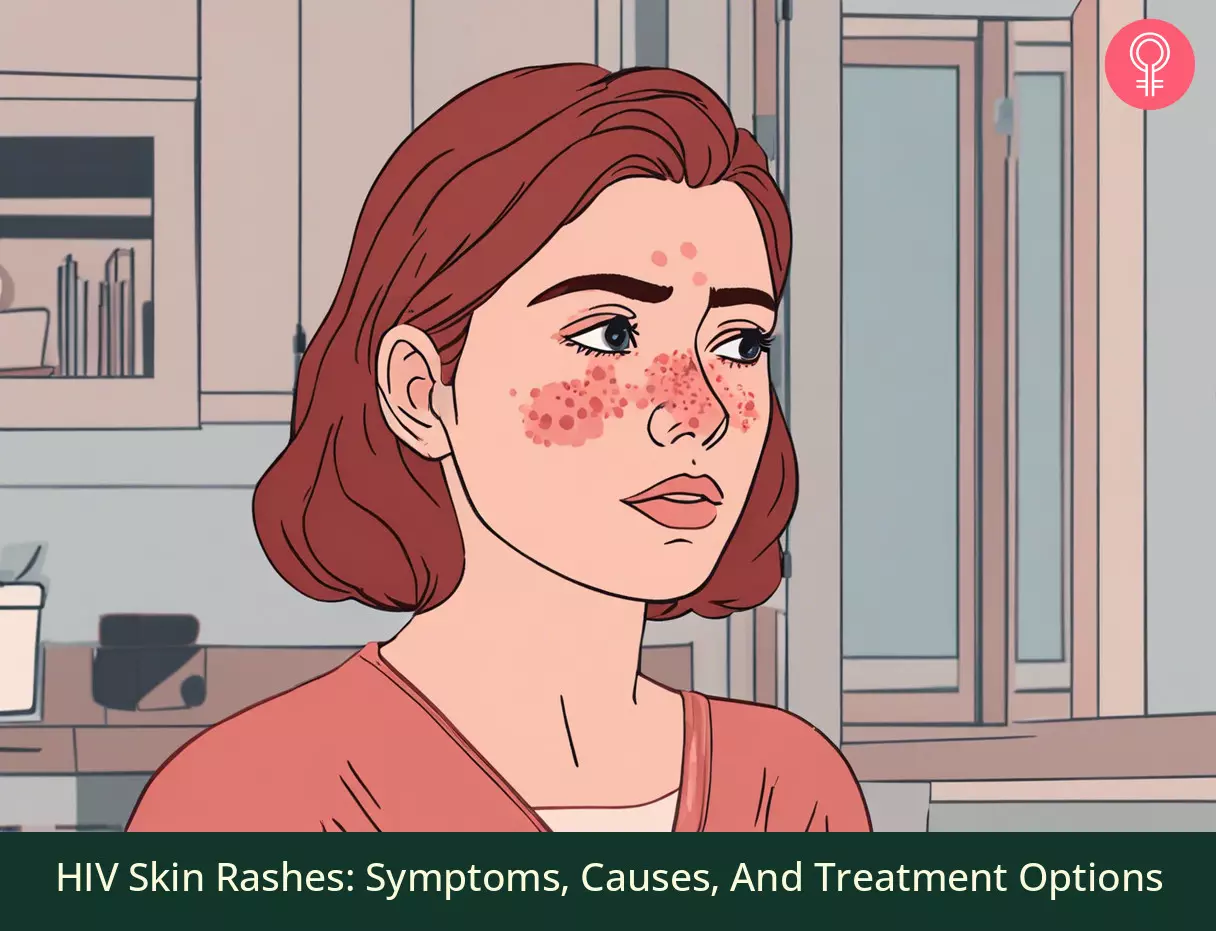
Image: Dall·E/StyleCraze Design Team
Unsure about HIV rash and its patterns? Gain clarity in this informative video that delves into its nature and behavior. Check it out!
Personal Experience: Source
StyleCraze's articles are interwoven with authentic personal narratives that provide depth and resonance to our content. Below are the sources of the personal accounts referenced in this article.
i. Impossible & Inevitable
https://beaunewham.medium.com/impossible-inevitable-590edd5ff88
References
Articles on StyleCraze are backed by verified information from peer-reviewed and academic research papers, reputed organizations, research institutions, and medical associations to ensure accuracy and relevance. Read our editorial policy to learn more.
- Inflammatory dermatoses in human immunodeficiency virus
https://ijstd.org/article.asp?issn=2589-0557;year=2017;volume=38;issue=2;spage=113;epage=120;aulast=Garg - Cutaneous findings associated with HIV disease including AIDS: experience from Sub Saharan Africa
https://pubmed.ncbi.nlm.nih.gov/1492376/ - About HIV
https://www.cdc.gov/hiv/basics/whatishiv.html - Side Effects Of HIV Medicines
https://hivinfo.nih.gov/understanding-hiv/fact-sheets/hiv-and-rash - Drug hypersensitivity in human immunodeficiency virus-infected patient: challenging diagnosis and management
https://www.ncbi.nlm.nih.gov/labs/pmc/articles/PMC3921866/ - New insights into HIV-1-primary skin disorders
https://www.ncbi.nlm.nih.gov/labs/pmc/articles/PMC3037296/ - Hypersensitivity reactions to HIV therapy
https://www.ncbi.nlm.nih.gov/labs/pmc/articles/PMC3093072/ - Stevens-Johnson syndrome/toxic epidermal necrolysis
https://rarediseases.info.nih.gov/diseases/7700/stevens-johnson-syndrome/ - Cutaneous Manifestations of Human Immunodeficiency Virus: a Clinical Update
https://www.ncbi.nlm.nih.gov/pmc/articles/PMC4447481/
Read full bio of Dr. Schwarzburg
Read full bio of Anjali Sayee
Read full bio of Monomita Chakraborty





